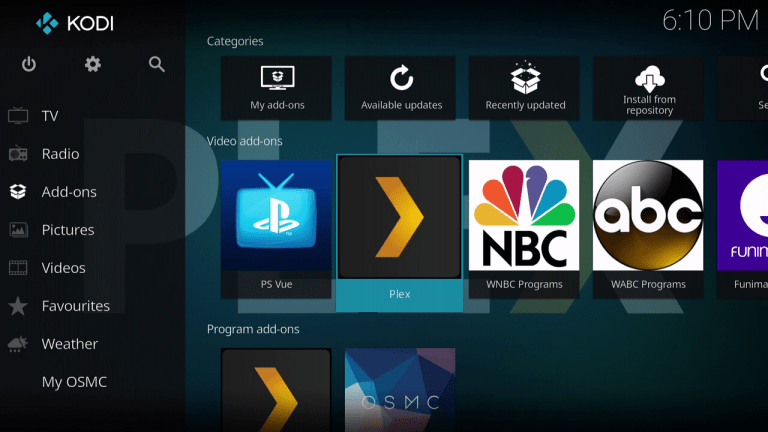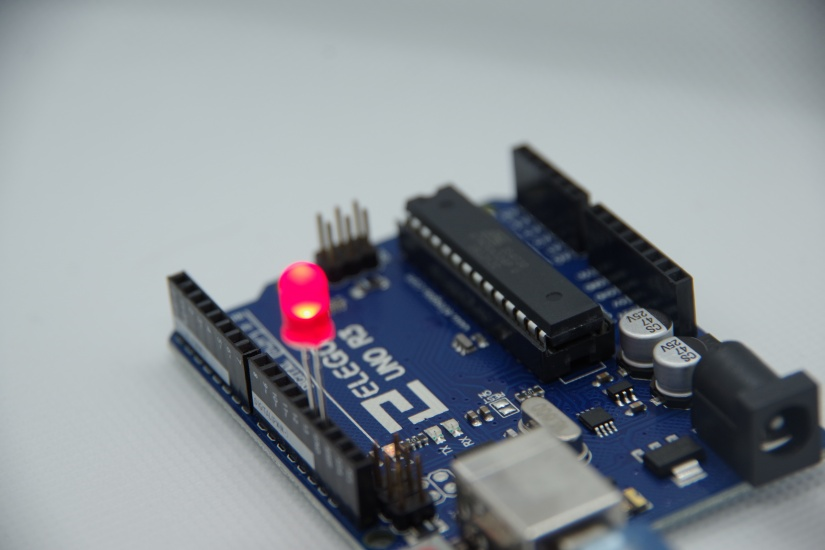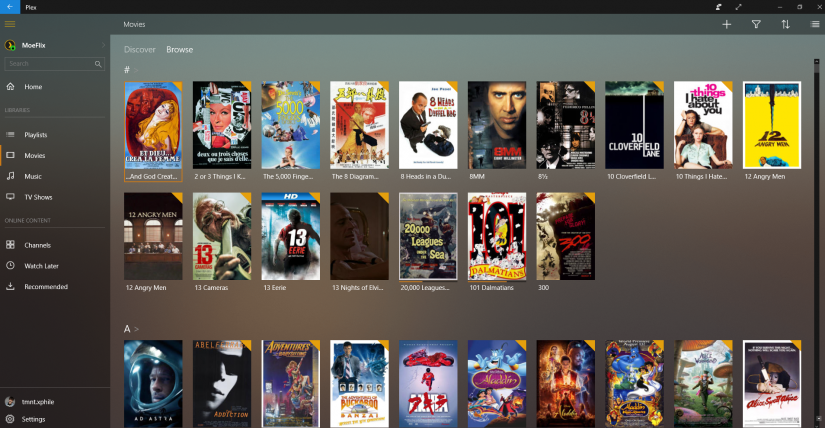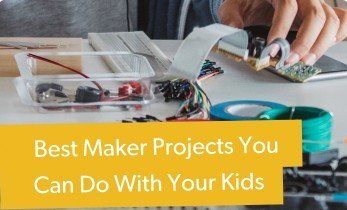Stay Inside Stay Inspired: Easy Quick Maker Projects
Maker projects, just like the do-it-yourselfers (DIYers) that create them, come in all shapes and sizes. While some are pretty complex and challenging, requiring an extensive parts list, others are easy as (raspberry) pi(e). Easy, quick, accessible maker projects are great options for rainy afternoons, weekend builds, and passing the time while practicing social distancing. Just because you're self-quarantining because of a novel coronavirus outbreak, or hiding from family members, doesn't mean you can't still find a creative outlet. Here are the best maker projects to help you stay home, stay safe, stay inside, and stay inspired!
1. DIY Raspberry Pi Steam Link
The Raspberry Pi is a fantastic device, and with its low-cost price tag, the Pi is an affordable foundation upon which many a maker project can be built. Video game delivery service Steam ushered PC gaming into the living room with its Steam Link which let gamers stream their computer games from PCs to their TVs for living room play. Steam Big Picture Mode launches a ten-foot interface that looks stunning on large-format displays such as TVs or projectors for couch gaming. And with excellent gamepad support from many modern titles, it's easy to play PC games console-style. Even sans controller compatibility, a gaming keyboard and mouse set up coupled with a lapboard or coffee table works just fine. Unfortunately, Valve discontinued its Steam Link. However, the Steam Link app was released for Android and iOS devices as well as the Raspberry Pi.
For a DIY Raspberry Pi Steam Link, you'll need a Raspberry Pi board, microSD card, power supply, case, and peripherals such as a keyboard, mouse, and gamepad. On top of that, a Linux-based distribution is necessary such as Raspbian, Debian, or Ubuntu. Alternatively, you can run Steam Link on RetroPie. Once you've installed Steam Link, you can stream your games to the TV for big-screen gaming. Fun, cheap, and a blast for all ages, a Raspberry Pi Steam Link will help you kill the time while stuck inside.
2. Retro Gaming Console - RetroPie, Recalbox, Batocera, Lakka, and More on the Raspberry Pi and Other SBCs
Many makers, including myself, were originally attracted to the Raspberry Pi because of its capabilities as a retro gaming machine. And while it's able to handle far more than that, the Pi remains one of the best single-board computers for retro gaming. And there are plenty of retro gaming operating systems for the Raspberry Pi as well as other maker boards including RetroPie, Recalbox, Batocera, and Lakka. Alternative development boards for retro gaming include the Odroid XU4, RockPro64, ASUS Tinker Board, and Odroid N2. You can even snag a retro gaming console clone case to make your own NES Classic Mini, SNES Classic, or Sega Genesis Mini. Set up is simple, and this project results in a retro blast from the past.
3. Maker Kits - DIY Disco Helmet, LED Mood Lamp, Wireless Charging Stand, or GPS Tracker
Under the maker umbrella, there are loads of different subcategories. These range from tinkering with electronics to 3D printing, arts and crafts, or a slew of other items. With Electromaker Kits, you can put together neat projects such as a disco helmet, mood lamp, GPS tracker, or wireless charging stand. Exploring the intersection of electronics and 3D printing, Electromaker Kits come with virtually everything you need including 3D printable files plus all electronic components. They're great for any skill level, and since projects are pre-packaged, you'll avoid piecemealing a project together. All components are guaranteed to work.
4. Make a Game
Aside from game streaming and retro gaming, you can code your own games as well. Sure, they might not be AAA titles like Crysis, The Witcher 3, or Half-Life: Alyx, but game development is certainly a feasible feat while stuck at home. There are tons of game development tips, tricks, and tutorials around. Code the Classics is a fantastic resource that can get you started designing games, complete with code snippets. Scratch is a beginner-friendly block-based coding language that you can get started with to develop simple games such as Archery, Cats, and Turtle Race. Don't be intimidates by how difficult coding a game might sound. It's a lot easier than it seems.
5. Make a Kodi HTPC

There's a lot of free, legal content to stream from the likes of Plex, Crunchyroll, Crackle, Tubi, and a host of other services. You can stream via a web browser, find apps for set-top boxes, smart TVs, mobile devices, game consoles, and more. But building a Kodi home theatre PC is a solid idea that proves perfect for transforming a single-board computer into a full-fledged home theatre PC (HTPC) capable of local file playback and streaming content from various sources. Kodi is available as an app for Linux, Android, and other operating systems, or as a standalone platform for boards like the Raspberry Pi. Then, you can stream from legal Kodi plugins like Crackle,
6. Block Ads with Pi-Hole
Ads are pretty much everywhere. While they can definitely be pretty annoying, many sites do rely on ads for revenue. For ad-blocking, you can install plugins or software. But that's all device-specific. Alternatively, a whole-home ad-blocking server is a great way to protect each device on your network. Using Pi-Hole, you can spin up an ad blocker to cover your home internet. Requiring little more than a Raspberry Pi and the free, open-source Pi-Hole software itself, it's a cost-effective project you can make at home. You can even make a Pi-Hole DNS traffic visualizer to complement it.
7. Make a 3D Print Server with OctoPrint
For 3D printing enthusiasts, a 3D print server is an excellent project to make one afternoon. Using OctoPrint, you can build a networked 3D printing station to manage and monitor print jobs, plus more. There are tons of OctoPrint plugins to gain additional functionality such as taking time-lapses or leveling your print bed. It's a breeze to install OctoPrint, and super handy for any 3D printing buffs.
8. Arts and Crafts
Maker projects don't always center on electronics. In fact, one of the most entertaining activities you can create at home is a junkbot. You can absolutely make a robotic junkbot, or simply transform a trash heap into a friendly creature. Recyclable materials transform into junkbots that are sure to draw out much creativity. Equally as much fun for adults and kids, arts and crafts are a nifty means of passing the time while stuck at home and stuck inside.
9. Build a DIY Home Server
A home server comes in handy. Whether its for file storage, a media server, web server, game server, VPN server, or torrent server, you have plenty of options. If you've got a spare single-board computer lying around, that's a solid choice for a low-power, low-cost server. But you can use virtually any PC available. My first ever media server was a repurposed AMD A10-powered laptop, but I eventually graduated to a dedicated Lenovo TS140 ThinkServer. I've used Raspberry Pi boards, an Odroid XU4, and RockPro64 to make various servers. If you're stuck at home, it's the perfect opportunity to make sure you've got a data backup, and one that's accessible from anywhere is even better.
10. Learn How to Use an Arduino - Blink LEDs, Program Servos, and More

Because Arduino microcontrollers require connected components and code in an integrated development environment (IDE), it can seem intimidating. Since maker boards like the Raspberry Pi function similar to more traditional desktops or laptops, they might appear less intimidating for beginners. Yet Arduinos remain arguably easier to use. A microcontroller simply performs one task. There may be multiple elements of that, but all code is in the IDE so it's potentially easier to troubleshoot when compared to a full-on computer like a Raspberry Pi running a Linux operating system and multitasking.
And there's a lot to explore with an Arduino. You can start with basic tasks such as blinking an LED or hooking up and programming servo motors. This affords a strong understanding of both Arduino software and hardware. To ease your transition into Arduino tinkering, snag an Arduino starter kit. Or find a specific Arduino-based project such as a smart plant watering system that comes with everything you need.
Best DIY Projects You can Make While Stuck at Home - Final Thoughts
Just because your mobility is limited and you're stuck at home doesn't mean you can't continue to make and stay inspired. In fact, all of that extra time you'd otherwise spend commuting, working, in classes, or hitting up the pub, cinema, or gym means you've got extra bandwidth to complete that elusive project that's been sitting around unfinished, or start a new one. Plus, you can always crack open a book on topics like Arduino, Raspberry Pi, the Asus Tinker Board, and a slew of other subjects.
Your turn: What maker projects do you suggest for staying inside and staying inspired? What have YOU created lately?
















































